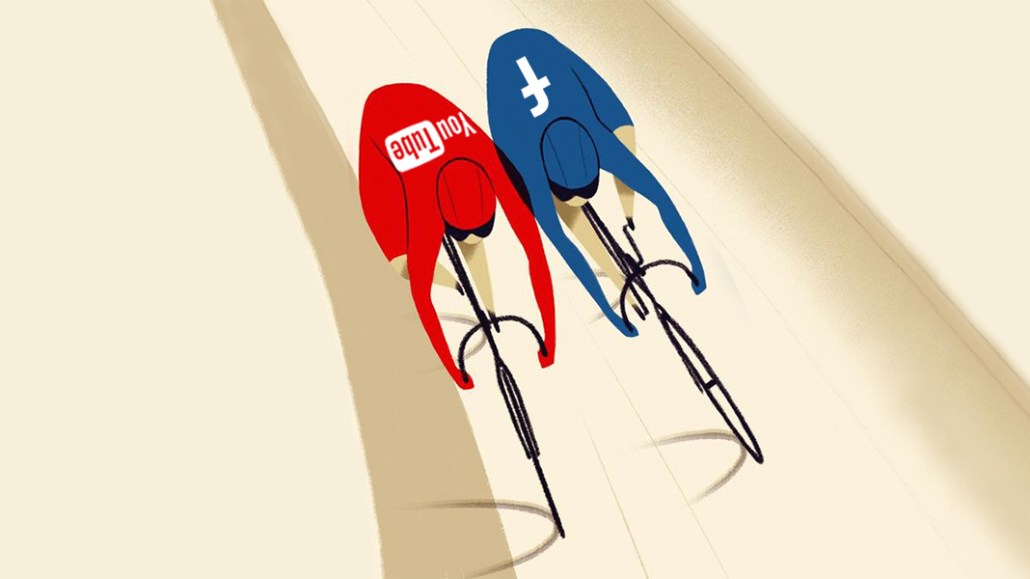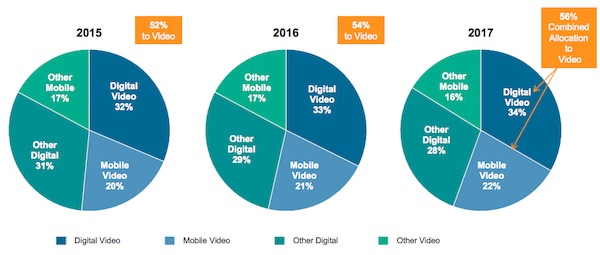Save 50% on a 3-month Digiday+ membership. Ends Dec 5.
Best of the week: Facebook eyes YouTube with launch of Watch shows

This week, our top stories examined the rollout of Facebook-funded shows on Watch, publishers’ pivots to video and more. As always, a full list of these articles appears at the bottom.
Funded Facebook Watch shows debut
Facebook’s latest attempt to take on YouTube has begun, with publishers like Business Insider, Hearst and Refinery29 premiering Facebook-funded shows on the Watch platform this week.
The shows are part of Facebook’s shows initiative, through which it subsidizes the cost of longer-form, episodic video series for Watch. Facebook has more than 30 content partners for Watch and is paying $10,000-$40,000 per episode for these shows, buying at least five episodes upfront. The idea is to release episodes weekly to prompt users to more frequently return to Watch. Facebook expects to eventually offer “hundreds” of shows, a spokesperson said.
Whether Facebook can create a viewing experience similar to YouTube is an open question. But publishers seem optimistic. “As this medium develops, we’re excited to invest more and more into [our team creating Watch shows],” said Nicholas Carlson, editor-in-chief of Business Insider’s lifestyle brand Insider, which has debuted two Watch shows.
And publishers, including Business Insider, are already approaching advertisers about sponsored shows on Watch. The interest appears to be mutual.
“We’ve already talked to Facebook, clients and some [Watch] partners about the possibilities [in branded shows],” said Noah Mallin, head of social at MEC North America. “It’s just a question of integrating it in a way where the content is discoverable.”
What’s behind the recent publisher pivots to video?
Shifting ad dollars are one factor. Video ad spend in the U.S. topped $10 billion in 2016 and is expected to exceed $18 billion by 2020, according to eMarketer. This spring, the Interactive Advertising Bureau and Advertiser Perceptions surveyed more than 350 advertisers who said they will spend 56 percent of their ad dollars on video in 2017.
Ad position: web_incontent_pos1

Another culprit driving the pivots: Facebook. “Facebook has prioritized video and recently started rolling out Watch,” said Brendan Gahan, founder of ad agency Epic Signal. “While Facebook has been a great traffic source, publishers have grown reliant upon the platform and therefore are at the mercy of its whims, goals and desires, leaving them exposed.”
Stat of the week
Since USA Today started testing a personalized site design on its mobile website in April, users served the new design spent about 45 seconds on each article they read, while users with a traditional design spent about 25 seconds on each article.
Quote of the week
A female ad tech executive shares her experiences from over a decade in the industry:
“I was once on my way to an industry awards show and was told by my boss how well I was going to be representing the company in the dress I was wearing. In his mind, he was paying me a compliment. At another work event, I was trying to talk to an external exec about work-related issues, and every time I spoke, he just pointed out the fact I can still move my eyebrows because he meets so many women with Botox.”
Interesting takes elsewhere:
- Nieman Lab’s Laura Hazard Owen chats with Medium founder and CEO Ev Williams about his company’s future.
- The Verge’s Andrew Liptak covers artists who installed signs in locations throughout New Zealand that mimic online recommendations to suggest other similar places.
This week’s top Digiday stories:
- Facebook starts rolling out funded shows for Watch
- Coming soon to Facebook Watch: sponsored shows
- What’s driving the publisher pivot to video, in 5 charts (hint: ad $$$)
- USA Today’s Facebook-like mobile site increased time spent per article by 75 percent
- Confessions of a female ad tech exec: ‘I fear being a token hire’
- Amazon grows its programmatic ad business
- Ad buyers blast Facebook Audience Network for placing ads on Breitbart
More in Media

What publishers are wishing for this holiday season: End AI scraping and determine AI-powered audience value
Publishers want a fair, structured, regulated AI environment and they also want to define what the next decade of audience metrics looks like.

Digiday+ Research Subscription Index 2025: Subscription strategies from Bloomberg, The New York Times, Vox and others
Digiday’s third annual Subscription Index examines and measures publishers’ subscription strategies to identify common approaches and key tactics among Bloomberg, The New York Times, Vox and others.

From lawsuits to lobbying: How publishers are fighting AI
We may be closing out 2025, but publishers aren’t retreating from the battle of AI search — some are escalating it, and they expect the fight to stretch deep into 2026.
Ad position: web_bfu




